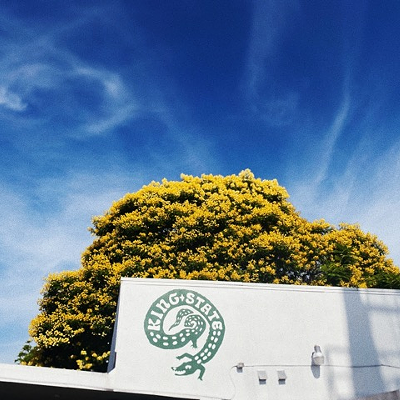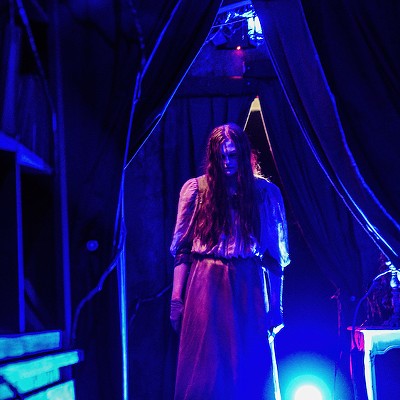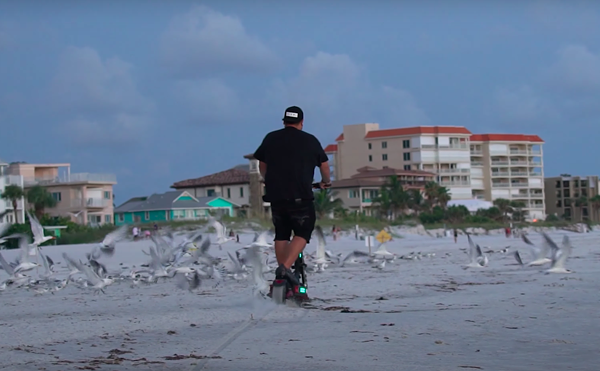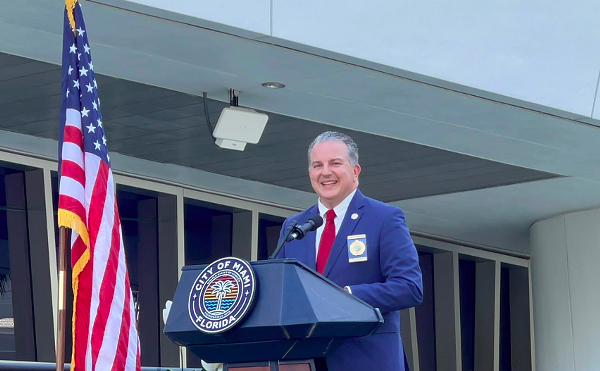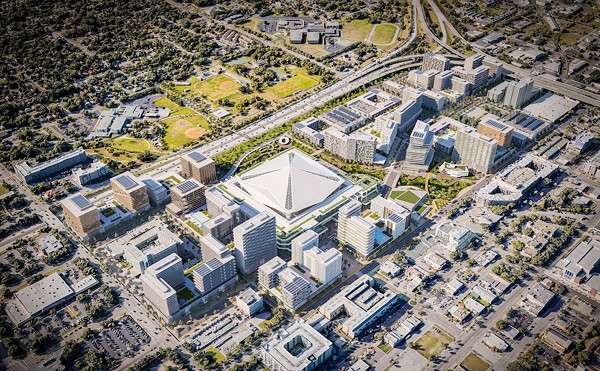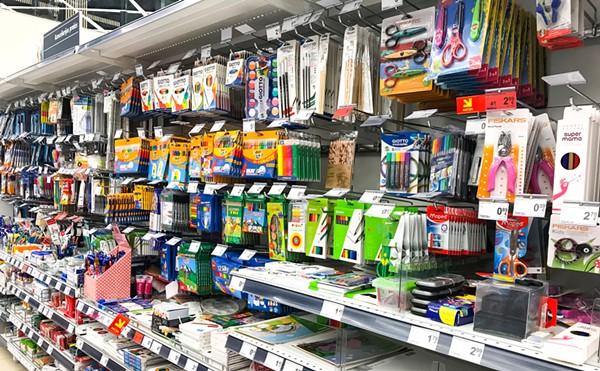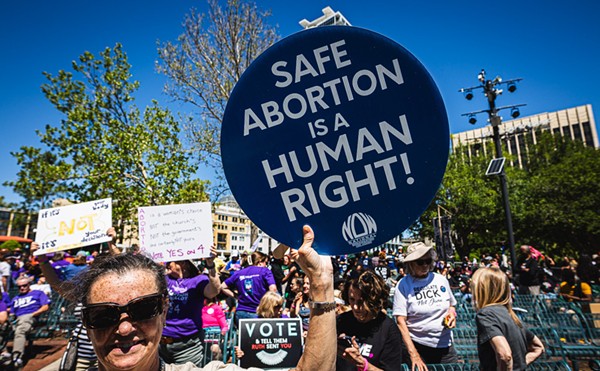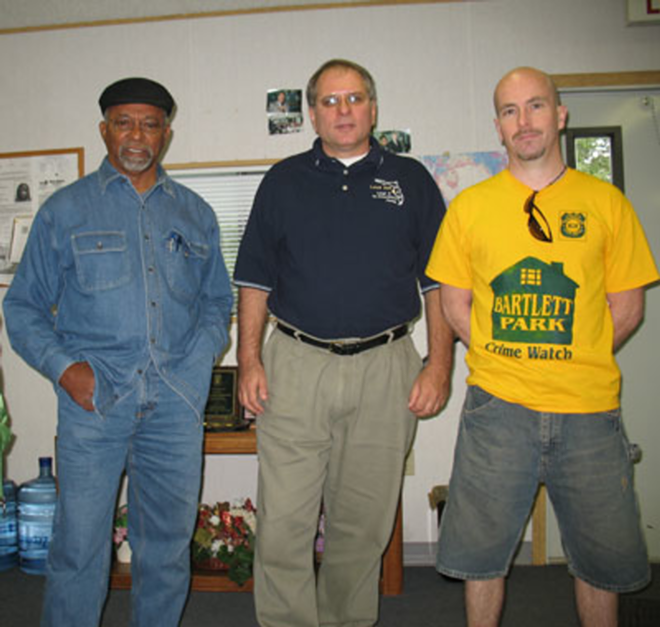
As I type this, the sharp whine of buzz saws and the crash of cinderblocks fill my street. Construction workers yell at each other over the din of a bulldozer tearing into the vacant lot across from my house. I can almost hear someone mutter: "There goes the neighborhood."
For the last year since moving to the Bartlett Park section of South St. Pete, I've looked out onto that vacant lot wondering who would eventually build on it.
Some of my neighbors have gone beyond curiosity to outright hostility. Case in point: Construction crews brought a blue portable toilet to the site a few weeks ago. For several days straight, workers arrived to find the toilet tipped over. The culprits weren't just bored teenagers, but angry adults, too.
Why the rude welcome? After all, the prospect of new construction in this area is a good thing in the eyes of some residents. In the 1980s and '90s, the neighborhood — bordered on the east and west by Fourth Street and Martin Luther King Jr. Boulevard, and on the north and south by 11th and 22nd avenues — was known more for its drugs and crime than for its famous tennis center or its Mediterranean Revival architecture. But now investors and homeowners are flocking in, building new houses and new lives, raising the average income by 43 percent between 1990 and 2000.
At the same time, though, housing stock is becoming depleted as dilapidated buildings are razed into vacant lots more suitable for sale. Higher property values mean larger tax bills and rising rents. The demographics are changing — homeownership is increasing, and the white population is expanding as African-American numbers decrease — yet the area's unemployment rate and the number of residents living below the poverty line remain higher than in the rest of the city.
A 2006 Urban Institute study used a loaded word to describe what's going on in Bartlett Park: "gentrification."
And tensions inevitably follow in gentrification's wake.
"We're already seeing that more people are being moved out of this community because they can't afford it," says longtime resident Thelma Patterson, adjusting her eyeglasses. "Houses are empty. People can't pay the rent because white folks have raised the rent."
As a white, renting resident, I'm in the middle. As a young professional, I'm able to afford rents a little higher than those who live below the poverty line. Residents tell me white people never used to set foot in the neighborhood "unless they were buying" (i.e. drugs); now I suspect my presence and that of other white neighbors may put some "urban pioneers" at ease.
Still, just like the poor artists who carved a niche for themselves in places like New York's SoHo district, I've been affected by the neighborhood's success. My landlord, Scott Swift, whose property taxes and insurance rates have skyrocketed over the past year, is raising the rent on my one-bedroom house by $200 a month. I can't blame him — he says he's been losing money on the house for months now.
And he doesn't buy the theory that white folks are pushing out the black folks.
"I'm not here to kick people out," he says, standing in front of my rental property one weekend. "I just want a better neighborhood."
But as I start to pack up my belongings into cardboard boxes, I can't help thinking of a question Thelma Patterson asked.
"You want to make the community better? Better for what? For who?"
There were two reasons I chose to rent in Bartlett Park: affordable rent and proximity to downtown. But since moving here, I've found another key to its appeal, despite the free-range pit bulls and the occasional sound of gunfire: a sense of community.
Turns out, that is the attribute appreciated most by longtime residents as well. Bartlett Park is one of those neighborhoods where people still wave at you from the front porch, inviting you over for a BBQ out of the oil-drum grill on their front lawn. Old men hang out under ancient, shady oak trees, playing cards and drinking beer, sometimes stopping to tell a story about "how it used to be." From the brick streets to the 1920s bungalows, Bartlett Park is one of the few spots in St. Petersburg that still has character, diversity and the working-class environment that I grew up in. As my first roommate said when she moved in, "This is the only spot in St. Petersburg where it feels like I'm in the Old South."
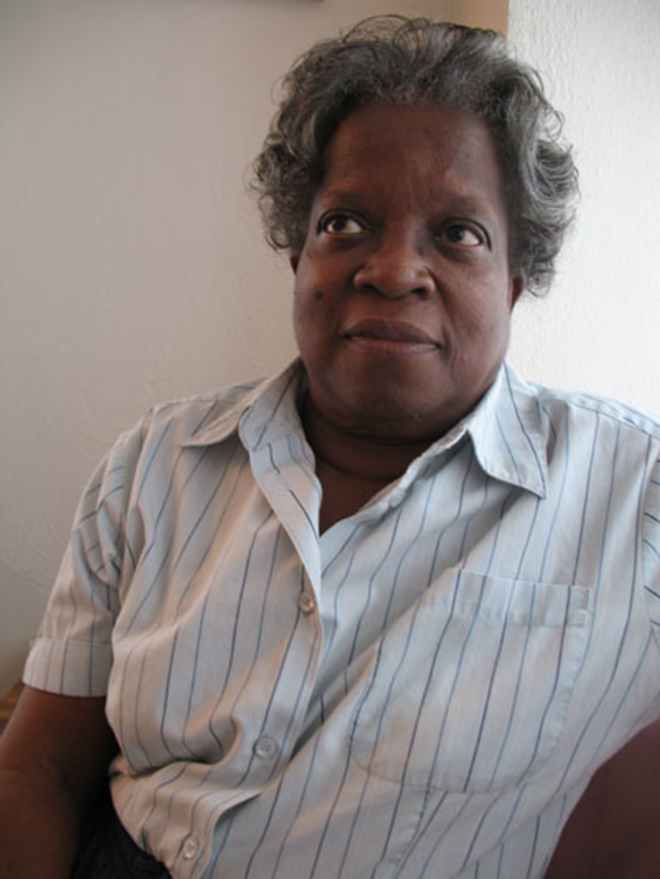
The neighborhood began life in 1913 as a small residential suburb named after St. Pete civic leader A.F. Bartlett. For decades, the neighborhood was predominantly white, middle-class and a destination for snowbirds. Willeen Kelly, who is black, moved here in 1959. "There was only one black person in my neighborhood," she remembers. Those demographics gradually changed during the '70s. When Tom Tito put $2,000 down for his house in 1974, he remembers the realtor trying to dissuade him from buying in the neighborhood.


